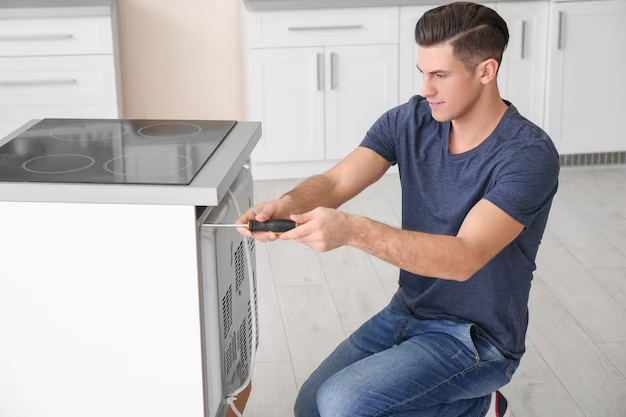Is It Safe to Plug a Refrigerator Into a Generator? Everything You Need to Know
When a sudden power outage strikes, preserving your perishable goods becomes a top priority. You might find yourself wondering, "Can I plug a refrigerator directly into a generator?" This question, though common, demands a closer examination to ensure you're not only safeguarding your appliances but also maintaining safety in your home. Let's dive into the essentials of generator usage, the technical requirements, and practical tips for ensuring the smooth operation of your refrigerator in such scenarios.
🔍 Understanding Your Generator: Key Considerations
Before deciding to plug your refrigerator into a generator, it's crucial to understand the generator's capabilities and limitations. Here's what you should consider:
Generator Wattage and Capacity
- Starting vs. Running Watts: Refrigerators require more power to start than to run continuously. This is referred to as starting (or surge) watts versus running (or rated) watts. Ensure your generator can handle both.
- Wattage Calculation: Calculate the total wattage of your refrigerator, considering both starting and running watts. Match this with the generator's output to prevent overload.
Generator Type
- Inverter Generators: These provide stable and clean power, ideal for sensitive electronics but can be more expensive.
- Conventional Generators: While often more affordable, they may produce electrical spikes that could harm sensitive devices without a surge protector.
Safety Features and Certification
- Circuit Protection: Look for generators with built-in circuit breakers and overload protection for added safety.
- Certifications: Ensure your generator meets the necessary safety and emissions standards for your region.
⚠️ Safety Precautions: Using Generators Responsibly
Using a generator is not without risks. Follow these safety precautions to ensure a secure and efficient connection:
Proper Setup and Ventilation
- Outdoor Usage: Always run generators outdoors in a well-ventilated area to prevent carbon monoxide buildup—a potentially lethal gas.
- Distance from Home: Keep the generator at least a few feet away from your home, with exhaust directed away from doors and windows.
Appropriate Cables and Connections
- Extension Cords: Use strong, heavy-duty cords rated for the generator's output. Avoid frayed or damaged cords, as they could pose fire hazards.
- Proper Grounding: Ground the generator according to the manufacturer's instructions to avoid electrical shocks.
Load Management and Fire Safety
- Avoid Overloading: Never exceed the generator’s rated capacity to prevent overheating and potential fire hazards.
- Fire Extinguisher Accessibility: Keep a suitable fire extinguisher nearby in case of emergency.
🧮 Understanding Power Needs: Calculating the Right Fit
Accurately estimating your power needs can make all the difference. Here’s how to do it:
Step-by-Step Calculation
- Identify Appliance Requirements: Check your refrigerator's wattage label or manual to find both the starting and running watts.
- Consider Additional Appliances: If you plan to power more than just the refrigerator, calculate their requirements and add them together.
- Selection of Generator Size: Choose a generator that exceeds the total calculated wattage to ensure efficient functioning.
Generators and Appliance Load Capacity
- Starting Watt Spike: Allow for the initial surge when the compressor kicks in by ensuring the generator can handle a temporary spike.
- Steady State Operation: After the initial start, the generator should comfortably manage the running load without strain.
🔧 Plugging Your Refrigerator In: Practical Steps
Plugging your refrigerator into a generator requires some preparation and careful execution:
Preparing the Generator
- Fuel Verification: Ensure the generator is fueled and ready for use.
- Startup Procedure: Follow the manufacturer’s instructions to start the generator safely.
- Stabilization Time: Let the generator stabilize for a minute before plugging in appliances.
Connecting the Appliances
- Using the Right Cord: Select a compatible extension cord to plug the refrigerator into the generator.
- Connecting in Stages: If you're plugging in multiple devices, connect them one at a time, starting with the largest load.
- Regular Monitoring: Periodically check to ensure everything operates smoothly without overheating or unusual noise.
🌟 Maximizing Efficiency and Longevity
Once you've successfully connected your refrigerator, these tips can help you maintain efficient and prolonged use:
Fuel Management and Conservation
- Efficient Fuel Use: Turn off unnecessary appliances to conserve fuel, especially if the outage is expected to last.
- Regular Refueling: Keep spare fuel stored safely, but only refuel when the generator is off and cool.
Maintenance and Care
- Routine Inspection: Regularly check oil levels, air filters, and connections to ensure optimal performance.
- Seasonal Servicing: Before hurricane or storm seasons, service the generator to be ready for potential use.
✔️ Summary: Key Takeaways for Generator Usage
Here's a quick checklist to ensure you're well-prepared when plugging a refrigerator into a generator:
- Confirm Generator Capacity: Ensure wattage covers both starting and running needs.
- Use Safe Practices: Always operate the generator outside with adequate ventilation.
- Choose Suitable Cords: Heavy-duty, undamaged cords are a must for safe connections.
- Monitor Loads: Avoid overloading, prioritizing essential appliances first.
- Maintain Equipment: Regular maintenance can prevent unexpected failures.
By following these guidelines, you'll not only navigate outages more smoothly but also extend the life of both your refrigerator and generator. 💡
In conclusion, plugging a refrigerator directly into a generator is feasible if done with careful consideration to equipment capabilities, safety practices, and efficient power management. Whether you live in an area prone to power outages or are just preparing for the unforeseen, the right tools and knowledge can offer peace of mind and security.
